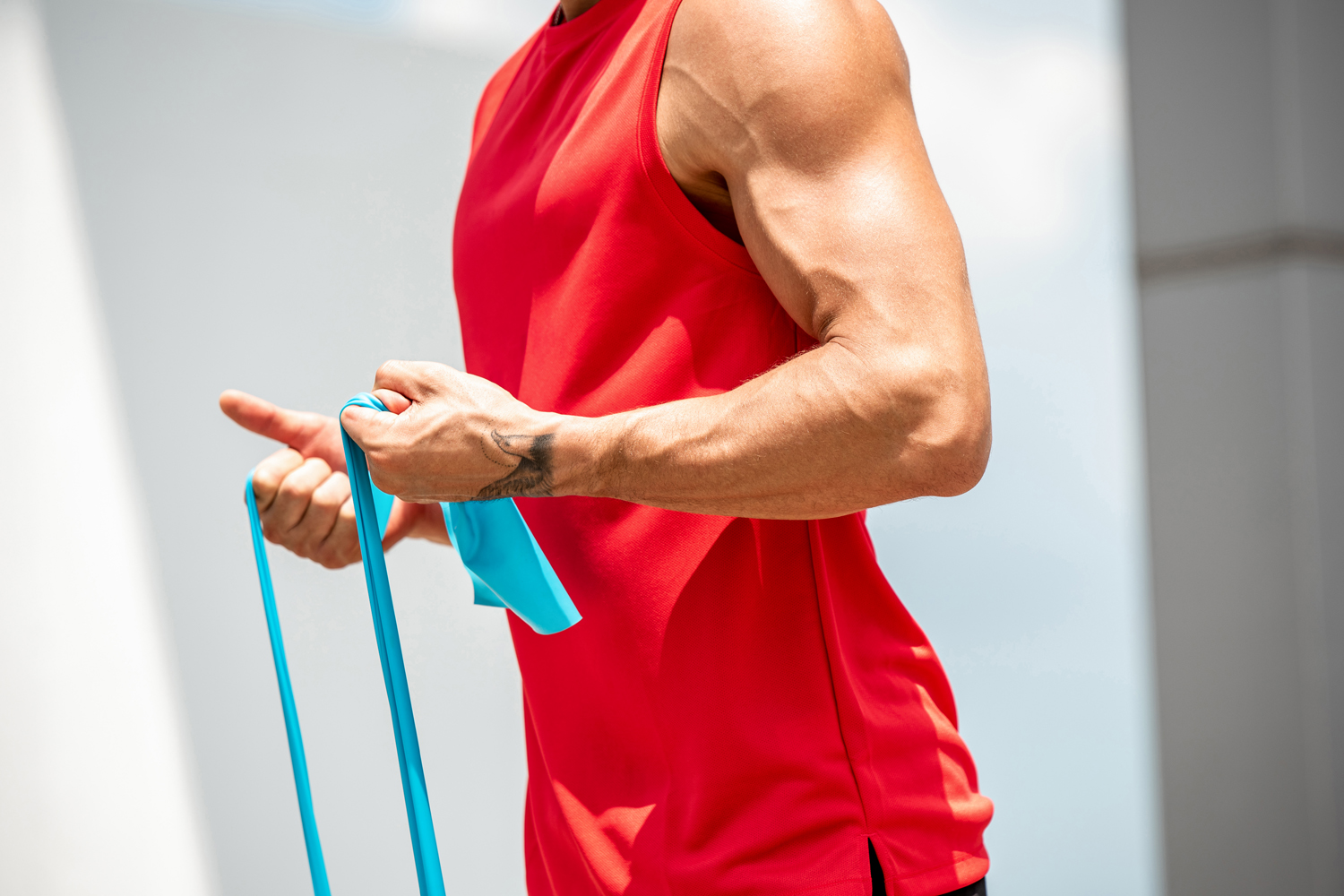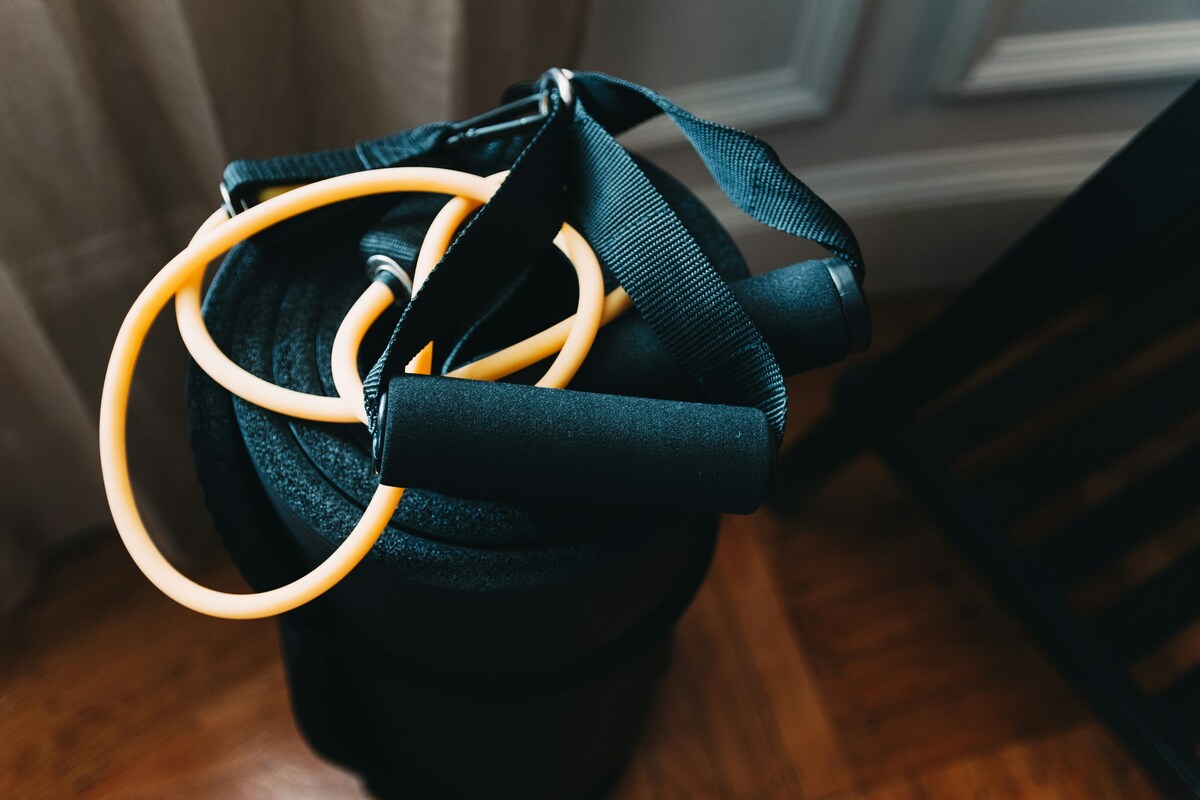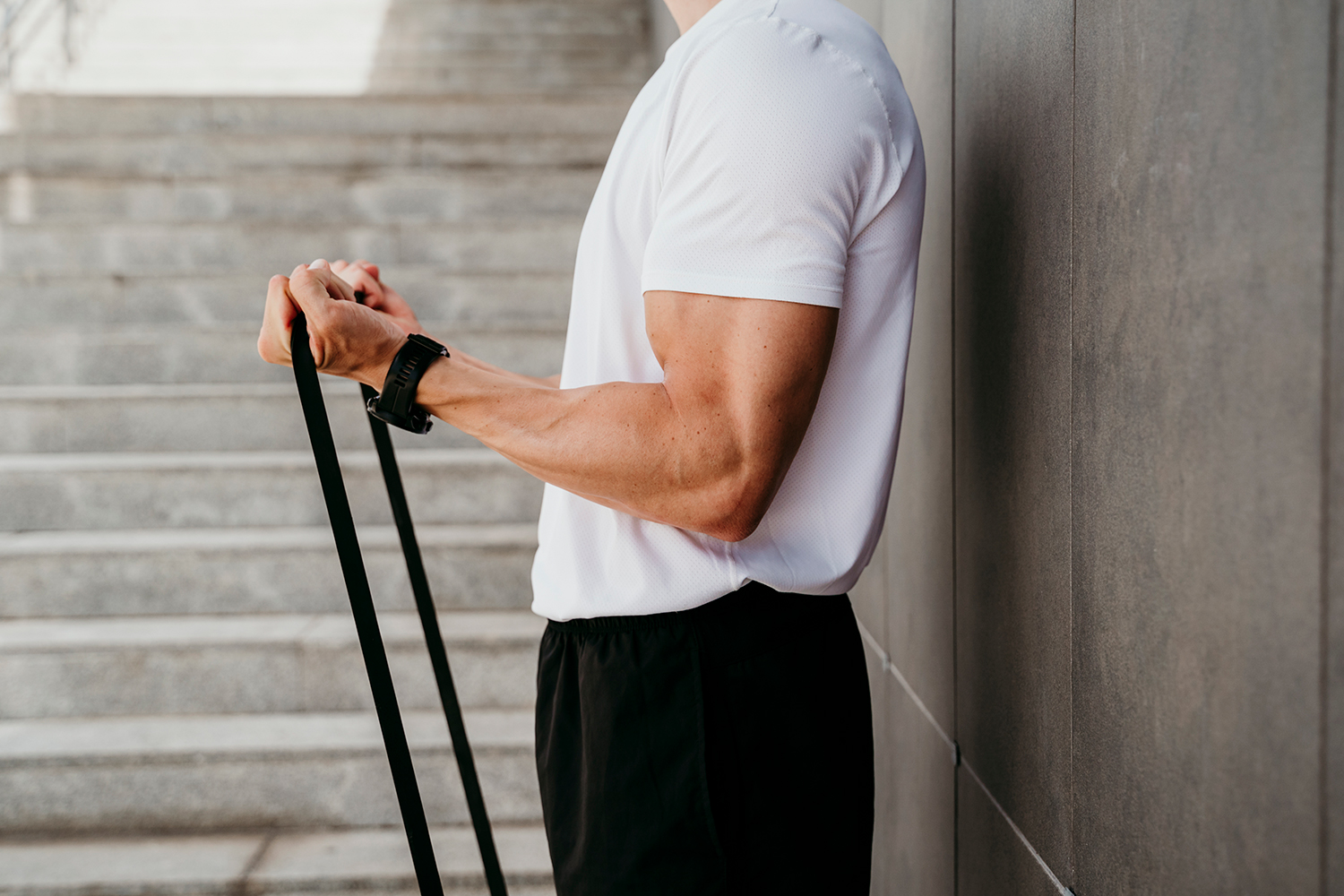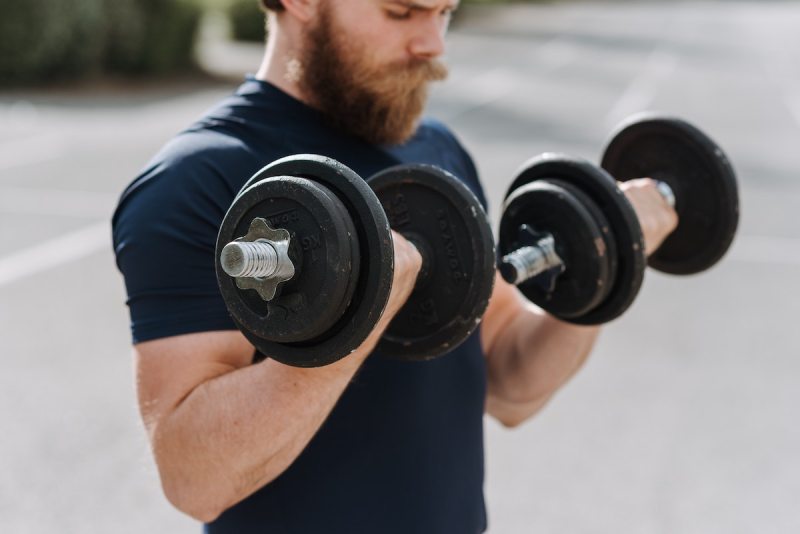
If you’re looking for ways to enhance your arm day regimen and you’d like to give extra attention to your biceps, try engaging in a resistance band bicep workout. This adaptability-friendly workout can support muscle building at various levels of resistance, which is ideal as you can safely elevate the challenge as you advance in fitness.
If you like the idea of building muscle while avoiding harm and stress to your joints, like overexertion, resistance band workouts may be the way to go!
Can resistance bands build biceps?

Resistance bands are effective for building bicep muscles. Band workouts can support your overall upper body strength as they work on your shoulders, back, chest, and arms.
You can use your bands to target your biceps with consistent tension, and you’ll see positive results in your muscle growth as well as the strength and definition of your arms when you are consistent.
5 effective resistance band bicep exercises

Bicep curls
One great bicep exercise is bicep curls. Doing this workout with resistance bands can increase muscle size, strength, and functionality.
Instructions:
- Stand with your legs shoulder-width apart in the middle of the resistance band.
- With your palms facing up, grasp a handle in each hand. Bend your elbows slowly and curl the handles up towards your shoulders. Keep your elbows tucked into your sides throughout the movement.
- Uncurl your arms, going slowly until they straighten out and return to your sides.
- Repeat this for three sets of 10 to 15 reps.
Hammer curls
This biceps workout is also great for building and improving your forearms. Note that a light grip on your bands is more favorable as you execute this exercise. This will prevent any strain or stress on your wrists as you work out.
Instructions:
- Position yourself so your feet are shoulder-width apart. The resistance band should be looped underneath your feet.
- With your palms facing each other, hold the ends of the band in each hand.
- Bend your elbows and start curling the band up to your shoulders. Do this while keeping your upper arms stationary and your elbows tucked into your sides. Be sure to keep your palms facing each other throughout the movements.
- Pause at the top of the movement, and then lower the handles back down to the initial position.
- You can repeat this for three sets of 10 to 12 reps.
Concentration curls
Concentration curls are a great bicep workout that can be done just as well with resistance bands if you don’t feel like using dumbbells. This provides variety when you feel like switching up your arm day routine, allowing you to spice up the way you develop your muscles and strength. You’ll also maintain a constant tension as you work through the exercise.
Instructions:
- Take a seat on a bench or chair, and place one end of the band under one foot.
- Hold one handle of the band in the hand opposite that foot. Place your elbow on the inside of your knee and hinge forward slightly while maintaining a straight back.
- Start with your arm fully extended, and then slowly curl the handle up to your shoulder.
- Pause at the top of the contraction for a moment before slowly releasing back to the starting position.
- Repeat for three sets of 10 to 12 reps on each side.
Wide-grip band curls
Utilizing a wide grip can help you target the biceps in a unique way. This exercise allows you to switch up how you would do typical curls and provides a new challenge.
Instructions:
- Step over the middle of a band and stand upright. Grasp the handles, press your elbows against your sides, and position your forearms outward rather than forward like with other curls.
- Exhale as you bend your elbows, squeezing your biceps at the top of the movement.
- Inhale as you slowly extend your arms back to the starting position in a controlled motion.
- Repeat for three sets of 10 to 12 reps.
Drag curls
Drag curls are a variation of the bicep curls that can be beneficial for improving your musculoskeletal strength, and they are effective for isolations. These curls are similar to the traditional bicep curls but differ in the way you drag the bands along your body while pulling your elbows backward.
Instructions:
- Stand on your band with your feet shoulder-width apart. Hold your handles with an underhand grip, positioning them at your sides.
- As you start to curl the handles up toward your shoulders, bring your elbows back rather than keeping them stationary by your sides. This should allow you to “drag” the handles up the front of your torso.
- Squeeze your biceps at the top of the movement for a few seconds before slowly releasing back into the starting position.
- Repeat for three sets of 12 to 15 reps.

Are band bicep curls effective?
Using resistance bands for bicep exercises like the bicep curl can be very effective. A resistance band offers greater tension when compared to a free weight. As a result, the tension will be maintained in the middle and will increase toward the top, and this will bring you closer to failure, setting your muscles up for hypertrophy.

Are dumbbells or resistance bands better for biceps?
Dumbbells are great for your biceps, but you’ll want to make sure you engage in resistance band exercises for your biceps as well. Resistance bands provide more versatile angles to work from and offer flexibility like pulling or pushing. You can switch it up and use dumbbells when you want to increase the intensity of your exercise and upgrade your muscle activation to get faster results.



